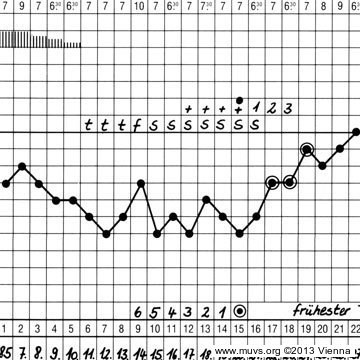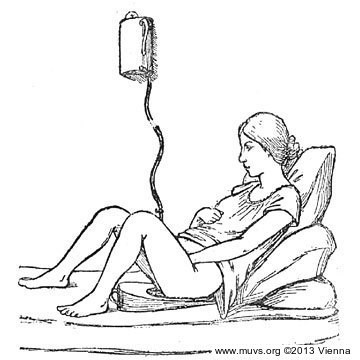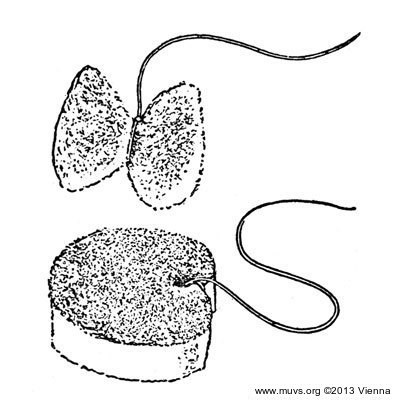Contraception
On the average, it is 'natural' for a women to experience 15 pregnancies over the course of a lifetime. This results in 10 deliveries, depending on health, living and hygiene conditions, including access to clean drinking water, nourishment, etc. In the past, 7 children out of 10 of these births survived. Yet then as now, this would be far too many babies for most people to handle, given economic, social as well as other factors.
For most cultures therefore, the limitation of births was and remains an important topic over the course of the generations.
100 years ago Sigmund Freud prophetically reflected upon this matter, remarking that it would be the greatest liberation for mankind were it to succeed in separating the sexual drive from reproduction.
Yet close to 100 years ago, different opinions held sway over the understanding of when a woman could conceive.
It was only in 1930 that Prof. Hermann Knaus of Graz (and simultaneously Prof. Kyusaku Ogino of Japan) established the cycle of a woman's days of fertility around ovulation. Their findings led to the development of modern contraceptive methods as well as artificial insemination. But also the rhythm method (counting days) rests on the principles established by Knaus and Ogino.
Up to this time, an unbelievable number and variety of ineffective if not painful contraceptive methods had been tried out. An overview of these approaches reveals the despair and at the same time the imagination behind attempts to control fertility throughout history.
 The Rhythm Method or Self-Observation
Nature at work: The female cycle is subject to such influences as emotions and is therefore not always regular.
The Rhythm Method or Self-Observation
Nature at work: The female cycle is subject to such influences as emotions and is therefore not always regular.
 Vaginal Rinsing
Vaginal Rinsing
 Vaginal Barriers
In addition to coitus interruptus, vaginal means commonly used to prevent against unwanted pregnancy.
Vaginal Barriers
In addition to coitus interruptus, vaginal means commonly used to prevent against unwanted pregnancy.
 Condoms
Condoms were made from the air bladders of fish and the appendix of sheep up to100 years ago.
Condoms
Condoms were made from the air bladders of fish and the appendix of sheep up to100 years ago.
 Futile Attempts
A lack of knowledge and great urgency due to high fertility rates led to trying every method imaginable.
Futile Attempts
A lack of knowledge and great urgency due to high fertility rates led to trying every method imaginable.
 Coils
Why is the IUD referred to as a contraceptive coil? The only intratuterine pessary in a coil form couldn't convince but the name stays.
Coils
Why is the IUD referred to as a contraceptive coil? The only intratuterine pessary in a coil form couldn't convince but the name stays.
 Pill and Company
Pill and Company
 Sterilisation
Sterilisation is an ever more popular birth control method, whether for man or woman, once family plans have been decided.
Sterilisation
Sterilisation is an ever more popular birth control method, whether for man or woman, once family plans have been decided.
 Future Methods
A real challenge: Despite the numerous contraceptive methods available, research continues.
Future Methods
A real challenge: Despite the numerous contraceptive methods available, research continues.
 Pregnancy Tests
Greetings from the frog: Up until around 1960, biological methods were used to determine pregnancy.
Pregnancy Tests
Greetings from the frog: Up until around 1960, biological methods were used to determine pregnancy.
 Body Models
A look inside the body: How is the diaphragm positioned? How does the pill work? Where is the IUD situated and where is the thread?
Body Models
A look inside the body: How is the diaphragm positioned? How does the pill work? Where is the IUD situated and where is the thread?
 Media
Mirror of the times: The media promote new contraceptive methods – or silence them to death.
Media
Mirror of the times: The media promote new contraceptive methods – or silence them to death.